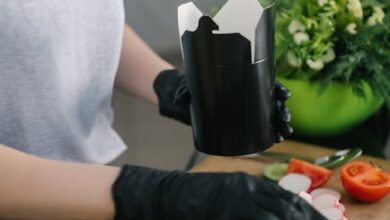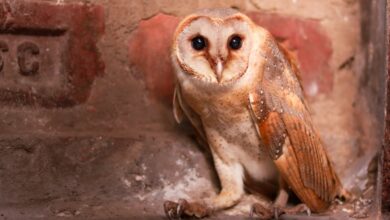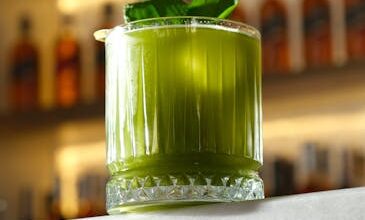The Bourbon Conundrum: Tradition Meets Turbulence

There’s something undeniably romantic about a good glass of bourbon. The amber hue, the complex notes of caramel and vanilla, the whisper of history in every sip. It evokes images of rolling Kentucky hills, seasoned distillers, and traditions passed down through generations. For many, bourbon isn’t just a drink; it’s an experience, a craft steeped in time and intuition.
But behind every carefully aged barrel and every expertly poured dram, the bourbon industry faces a storm. From unpredictable climate shifts impacting grain harvests to volatile supply chains for glass bottles and corks, not to mention the immense capital tied up in years of aging inventory, the “old guard” of whiskey makers finds itself grappling with a modern world that demands more speed, efficiency, and resilience than ever before. It’s a turmoil that threatens to shake the very foundations of this beloved spirit. Yet, what if the solution isn’t found in further clinging to the past, but in embracing the future? What if the shot it needs is a strong dose of technology?
The Bourbon Conundrum: Tradition Meets Turbulence
For centuries, distilling bourbon has been an art form. Master distillers relied on their senses – the aroma of fermenting mash, the feel of the distillate, the subtle changes in the rickhouse air – to guide the process. This reliance on craft and intuition is a huge part of bourbon’s charm, but it also presents significant challenges in an increasingly complex and competitive global market.
Consider the aging process. A bourbon barrel spends years, often decades, maturing in a rickhouse. This isn’t a static environment. Temperature fluctuations, humidity levels, and even the barrel’s position can dramatically affect the final product, including the infamous “angel’s share”—the portion that evaporates over time. Managing these variables across thousands, even millions, of barrels using traditional methods is a monumental task, often leading to inconsistencies and significant financial risk.
Beyond the barrel, the entire supply chain is under pressure. Climate change is making grain sourcing less predictable. Global events can disrupt the availability of critical materials like glass and oak. Consumer demand, while currently booming for premium whiskeys, can shift, leaving distilleries with too much or too little of certain age statements. The industry, long characterized by its slow, deliberate pace, is now being forced to confront a world moving at warp speed, and its low-tech methods are starting to show their age.
Data & Distillery: A New Kentucky Spark
Enter the new wave of distilleries, particularly a pioneering approach emerging from Kentucky. These aren’t just new buildings; they represent a fundamental shift in how whiskey is made. Instead of relying solely on inherited wisdom, they’re integrating data, sensors, and automation at every stage, from grain to glass. It’s a software-driven approach that might seem alien to purists, but it promises a level of precision and insight previously unimaginable.
Sensors in the Rickhouse: Listening to the Barrels
Imagine a rickhouse not just filled with barrels, but with sensors. These tiny devices can monitor everything: ambient temperature, humidity, light exposure, and even the subtle changes within the barrel itself. This real-time data allows distillers to track the maturation process with unprecedented accuracy, understanding how environmental factors impact the “angel’s share” and the chemical composition of the whiskey. Instead of guessing, they’re making informed, data-backed decisions about where to place barrels, when to rotate them, or even when to bottle.
Automated Precision in the Stillhouse
In the stillhouse, automation ensures consistency that human hands, no matter how skilled, can’t always guarantee. Precise measurements of grains, water, and yeast, controlled fermentation temperatures, and finely tuned distillation parameters mean less variability batch-to-batch. This isn’t about replacing the master distiller’s palate, but about providing them with a perfectly consistent base spirit, allowing their expertise to truly shine in the blending and finishing stages.
This mix of data and automation isn’t just about efficiency; it’s about resilience. By understanding their process intimately through data, distilleries can better adapt to external pressures. A change in grain quality? Data can help adjust fermentation to compensate. A heatwave in the summer? Automated climate control (or strategic barrel movement) can mitigate its impact on aging whiskey. It’s about taking the guesswork out of some of the most critical and vulnerable parts of production.
Beyond the Barrel: Broader Implications & Future Sips
The implications of this tech-driven revolution extend far beyond individual distilleries. For an industry grappling with sustainability, data provides powerful insights. Tracking water usage, energy consumption, and waste generation allows for optimization and reduction efforts. For consumers, it could mean unprecedented traceability, verifying the authenticity of their pour and even knowing the exact conditions under which it matured. This builds trust and reinforces the premium nature of the product.
Furthermore, predictive analytics, fueled by years of accumulated data, could revolutionize forecasting. Imagine being able to predict future demand with greater accuracy, allowing distilleries to better plan their production cycles years in advance, minimizing overproduction or shortages. This is particularly crucial for a product with such a long lead time.
It’s important to clarify that this isn’t about creating “robot whiskey” or diluting the artisanal soul of bourbon. Instead, it’s about empowering master distillers with a new suite of tools. Technology acts as an enhancement, allowing them to focus on the truly creative and nuanced aspects of their craft, free from some of the operational uncertainties that have plagued the industry for too long. It’s about bringing the wisdom of tradition into sharp focus with the clarity of data.
The Tech-Infused Future of Whiskey: An Evolving Tradition
The bourbon industry’s journey forward is a delicate dance between honoring its rich past and embracing a technologically advanced future. The “turmoil” it faces – climate change, supply chain instability, the long financial commitments of aging – demands innovative solutions. The software-driven, data-rich approach pioneered by some new Kentucky distilleries isn’t just a trend; it’s a blueprint for longevity.
By leveraging automation and data analytics, bourbon can become more consistent, more sustainable, and more resilient. It can better navigate the complexities of the 21st century without sacrificing the character that makes it so beloved. The amber liquid in your glass will still be the product of skill, patience, and passion. But behind the scenes, a new era of precision and insight will be ensuring that the spirit of bourbon continues to thrive for generations to come. It’s not just a shot in the arm; it’s a strategic investment in the very future of whiskey.





